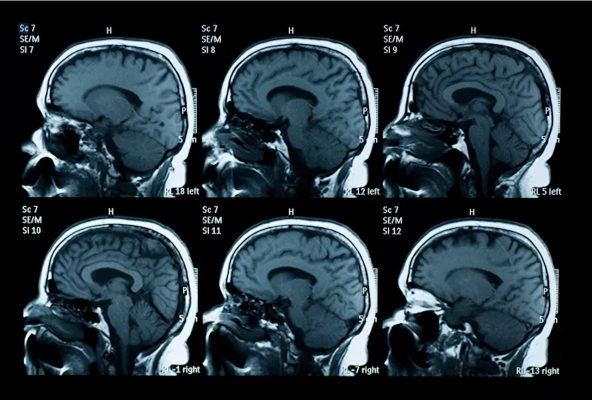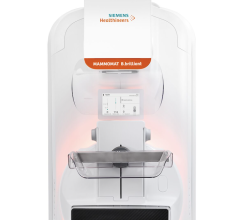
Following the positive opinion of the Committee for Medicinal Products for Human Use (CHMP) of the European Medicines Agency (EMA), and the recommendation sent by EMA to the European Committee (EC), the EC has granted Marketing Authorisation to Bracco Imaging for its Vueway (gadopiclenol) contrast agent in the European Union.
December 11, 2023 — Bracco Imaging S.p.A., an innovative world leader delivering end-to-end products and solutions through a comprehensive portfolio inclusive of precision diagnostic imaging modalities, announces that on December 7, 2023 the European Commission (EC) has granted the Marketing Authorisation for Vueway (gadopiclenol) in the European Union (EU). The approval granted by the EC followed positive opinion of the Committee for Medicinal Products for Human Use (CHMP) of the European Medicines Agency (EMA), and the recommendation sent by EMA to the EC.
Vueway (gadopiclenol) is a solution for intravenous injection approved by the EC for use with contrast-enhanced magnetic resonance imaging (CE-MRI) in adult patients and children aged 2 years and older to improve detection and visualization of pathologies with disruption of the blood-brain-barrier (BBB) and/or abnormal vascularity of the brain, spine, and associated tissues of the central nervous system (CNS) and CE-MRI of several body organs, i.e., the liver, kidney, pancreas, breast, lung, prostate, and musculoskeletal system. In September 2022, gadopiclenol was approved by the Food and Drug Administration (FDA) for its use in MRI of the CNS and the Body in the United States of America (USA)3, where the product is used in clinical practice at an increasing number of hospital systems.
Vueway (gadopiclenol) is a new highly stable, macrocyclic gadolinium-based contrast agent (GBCA) with the highest values of longitudinal (R1) relaxivity among all the GBCAs approved for use in the EU and the USA.4 Thanks to its high relaxivity, large, multicenter, adequate and well controlled clinical studies have shown that Vueway provides similar diagnostic efficacy at half the dose of gadobutrol, a GBCA routinely used in clinical practice in the EU.1,2
"The final approval of gadopiclenol by the European Commission marks a significant milestone in the field of diagnostic imaging. Its availability empowers healthcare providers with a powerful tool that can aid in the detection and assessment of a wide range of diseases and conditions," said Christian Herold, Full Professor at the Department of Biomedical Imaging and Image-guided Therapy, Medical University of Vienna, Vienna General Hospital Vienna, Austria. "From oncology to neurology, gastroenterology to musculoskeletal medicine, gadopiclenol has the potential to reshape the landscape of patient care across multiple specialties."
The positive CHMP opinion, the EMA recommendation, and the final EC approval were based on the results from two prospective, large-scale, randomized, double-blind, crossover clinical studies, PICTURE and PROMISE, conducted in more than 500 adult patients undergoing contrast-enhanced MRI and aimed at comparing the safety and efficacy of 0.05 mmol/kg gadopiclenol compared with 0.1 mmol/kg gadobutrol1,2. The PICTURE trial demonstrated comparable diagnostic efficacy at half dose in MRI of the CNS 1, while the PROMISE trial demonstrated the same in MRI of the head and neck, chest, breast, liver, pancreas, pelvis organs, and the musculoskeletal system.2
A reduced dose compared with gadobutrol and other GBCAs implies reduced exposure of patients to gadolinium, and reduced release of the metal in the environment.
"In our experience to date at MD Anderson with gadopiclenol, we have been pleased to be able to reduce our patients gadolinium exposure by half, while still achieving effective contrast enhancement. From today, European colleagues will be able to take advantage of this unique and highly potent solution," said Max Wintermark, Chairman of the Department of Neuroradiology, The University of Texas MD Anderson Cancer Center, Houston, Texas.
"We are thrilled to announce this groundbreaking development, which marks a significant milestone in enhancing patient care. This innovation benefits healthcare providers but also, more importantly, patients who undergo MRI scans and those living with chronic conditions. Vueway will not only lower the rate of inaccurate or inconclusive results of MRI procedures but may also contribute to improve treatment plans tailored to individual patient needs," concluded Fulvio Renoldi Bracco, CEO Bracco Imaging SpA.
About gadolinium-based contrast agents
Gadolinium-based contrast agents (GBCAs) are widely and routinely used to enhance the diagnostic performance of magnetic resonance imaging (MRI) and magnetic resonance angiography (MRA) examinations.5 Gadolinium is a rare earth metal that has unique magnetic properties that make it useful for MRI imaging.
About gadopiclenol
Gadopiclenol, initially invented by Guerbet with subsequent contribution of Bracco intellectual property, is a new macrocyclic gadolinium-based contrast agent (GBCA) with high relaxivity. The efficacy and safety of gadopiclenol have been evaluated in MRI of the central nervous system, head and neck, thorax, abdomen, pelvis, and musculoskeletal system (For US reference, refer to the FDA approved prescribing information).
Details on Phase III clinical trials are available on www.ClinicalTrials.gov:
- Efficacy and Safety of Gadopiclenol for Central Nervous System (CNS) Magnetic Resonance Imaging (MRI) Full Text View - ClinicalTrials.gov
- Efficacy and Safety of Gadopiclenol for Body Magnetic Resonance Imaging (MRI) Full Text View - ClinicalTrials.gov
About the PICTURE trial1
The PICTURE trial included 256 patients with known or highly suspected CNS lesion(s). All primary and secondary endpoints of the study were achieved. All blinded readers' evaluations indicated the superiority of the combined unenhanced/contrast-enhanced MRI with 0.05 mmol/kg gadopiclenol over unenhanced MRI alone for all lesion visualisation criteria (p<0.0001). For all three blinded readers, non-inferiority of 0.05 mmol/kg gadopiclenol to 0.1 mmol/kg gadobutrol (Gadavist) was demonstrated for all lesion visualisation criteria (p<0.0001). Results also indicated superior percent of contrast enhancement for all readers (p<0.0001), superior contrast-to-noise ratio for two out of three readers (p<0.01), and superior lesion-to-background contrast ratio with gadopiclenol for all readers (p<0.0001). In correlation with the greater contrast enhancement, the diagnostic quality of the images obtained with 0.05 mmol/kg gadopiclenol were in majority preferred over that provided by 0.1 mmol/kg gadobutrol by all three blinded readers (p<0.001).
About the PROMISE trial2
The PROMISE trial included 273 adult patients suspected of having an enhancing abnormality in one of three different body regions (head/neck, breast/thorax/abdomen/pelvis, or musculoskeletal). Off-site blinded readers with expertise in the respective body regions rated border delineation, internal morphology, and visual contrast enhancement. All primary and secondary endpoints of the study were achieved. For all blinded readers, 0.05 mmol/kg gadopiclenol was non-inferior to 0.1 mmol/kg gadobutrol for all visualisation parameters and all readers (P<.001), and superior to unenhanced images (P<.001). Two of three readers yielded higher percentage enhancement for gadopiclenol (P<.001). Lesion-to-background ratio did not differ. For most participants (75%–83%), readers reported no preference between 0.05 mmol/kg gadopiclenol and 0.1 mmol/kg gadobutrol images.
For more information: www.bracco.com
References:
1 Loevner LA, Kolumban B, Hutóczki G, et al. Efficacy and Safety of Gadopiclenol for Contrast-Enhanced MRI of the Central Nervous System: The PICTURE Randomized Clinical Trial. Invest Radiol 2023; 58:307-313
2 Kuhl C, Csőszi T, Piskorski W, Miszalski T, Lee JM, Otto PM. Efficacy and Safety of Half-Dose Gadopiclenol versus Full-Dose Gadobutrol for Contrast-enhanced Body MRI. Radiology 2023; 308: e222612
3 Food and Drug Administration. Novel Drug Approvals in 2022. Available at: https://www.fda.gov/drugs/new-drugs-fda-cders-new-molecular-entities-and-new-therapeutic-biological-products/novel-drug-approvals-2022. Accessed December 8, 2023
4 Robic C, Port M, Rousseaux O, et al. Physicochemical and pharmacokinetic profiles of gadopiclenol: a new macrocyclic gadolinium chelate with high T1 relaxivity. Invest Radiol 2019; 54: 475-484
5 FDA. Information on Gadolinium-Based Contrast Agents. https://www.fda.gov/drugs/postmarket-drug-safety-information-patients-and-providers/information-gadolinium-based-contrast-agents. Accessed December 8, 2023
Related content:
VIDEO: Talking Trends with Bracco: Investing in the Future of Radiology
Bracco and Guerbet Partner to Expand Access to Novel Imaging Agent
First Nationwide Use of Bracco's VUEWAY (gadopiclenol) Solution for Injection for MRI
Guerbet Announces Commercial Launch and First Patient Dosing of Elucirem (Gadopiclenol) Injection
Related Content of MRI Gadolinium Safety Concerns
The Debate Over Gadolinium MRI Contrast Toxicity
VIDEO: How Serious is MRI Gadolinium Retention in the Brain and Body? An interview with Max Wintermark, M.D.
VIDEO “Big Concerns Remain for MRI Gadolinium Contrast Safety at RSNA 2017,” An interview with Emanuel Kanal, M.D.
Radiology Has Failed to Properly Assess or Track MRI Gadolinium Contrast Safety
Recent Developments in Contrast Media
FDA Committee Votes to Expand Warning Labels on Gadolinium-Based Contrast Agents
European Medicines Agency Issues Update on Gadolinium Contrast Agents
ISMRM Issues Guidelines for MRI Gadolinium Contrast Agents
FDA: No Harm in MRI Gadolinium Retention in the Brain


 April 25, 2024
April 25, 2024 








